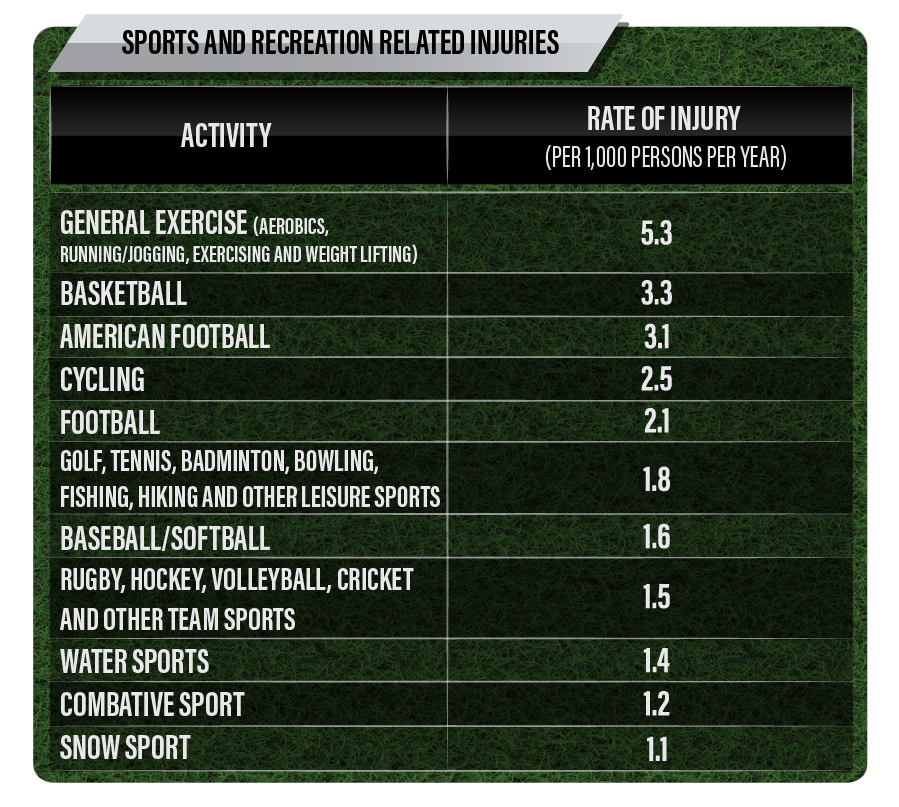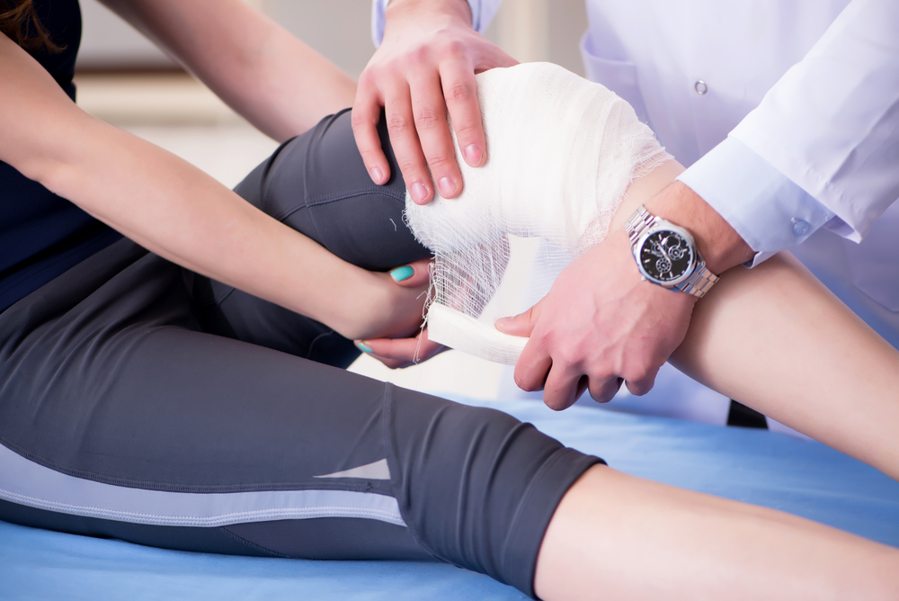Sports Injury Statistics Suggest: Golf is More Dangerous than Rugby
Golf is generally considered a safe sport with a low risk of injury. The latest findings by Golfsupport.com, however, reveal that golf is not as low-risk as commonly thought. Furthermore, a review of literature on golf-related injuries unveils that the severity of injury is often underestimated.
Risk of Injury in Golf is Higher than in Rugby
GolfSupport has analysed a report by the National Health Statistics Report (NHSR) which investigated 8.6 million sports- and recreation related injuries that were reported by people aged 5 years and above. GolfSupport noticed that football, rugby, boxing and similar more “violent” sports aren’t responsible for most injuries. Instead, most sports-related injuries were sustained during general exercise: aerobics, running/jogging, exercising and weight lifting. These accounted for 16.3% or all reported injuries at a rate of 5.3 per 1,000 persons.

The second highest rate of injury was observed in basketball (3.3 per 1,000 persons), followed by American football (3.1 per 1,000 persons), cycling (2.5 per 1,000 persons) and football (2.1 per 1,000 persons). At the rate of 1.8 per 1,000 persons, recreational sports - which also include golf - were found to be more “dangerous” than rugby, hockey and other team sports. These have the rate of injury of “only” 1.5 per 1,000 persons. Based on the NHSR’s results, it is even safer to train combative sports (rate of 1.2 per 1,000 persons) and engage in snow sport (rate of 1.1 per 1,000 persons) than to play golf, tennis, badminton and other racket sports as well as bowling, fishing, hiking and other leisure sports.

Injuries in Golf are Much More Common than Widely Believed
To find out more about injuries in golf, GolfSupport assessed data from a study by the British Journal of Sports Medicine. The data reveals that the risk of injury among amateur golfers has an incidence between 15.8% to 40.9% on an annual basis, while the lifetime incidence of injury in amateurs ranges from 25.2% to 67.7%. In professionals, the incidence rates are even higher: 31% to 90% annually and 31% to 88.5% over a lifetime. This means that nearly 7 in 10 amateurs and 9 in 10 professionals will suffer a golf-related injury at least once in a lifetime.
A study by the Norwegian School of Sport Sciences on golf-related injuries found that low back injuries account for 15.2% to 34% of all golf injuries, followed by injuries to the elbow (7% to 27%) and shoulder (4% to 19%). According to an Australian study of upper limb injuries in golf, injury to the wrist accounts for 10% of all golf injuries.
Golf-Related Injuries Can be Very Severe and Even Potentially Fatal

Photo credit: sattahipbeach/Shutterstock
In addition to being much more common than anticipated, golf injuries have also been found to be very dangerous and even potentially fatal, especially those involving the head. According to a study by Golf Digest, each year an estimated 40,000 golfers seek emergency treatment due to injuries caused by errant golf balls and flying club heads.
High risk of severe injuries is also associated with the use of golf carts. According to a study published by the American Journal of Preventive Medicine, golf carts are responsible for as many as 15,000 injuries per year. Most often resulting from falls, collisions and limb entrapment, however, not all golf cart-related injuries are related to golf.
Report on lighting deaths in the United States from 2006 through 2016 also reveals that golf has one of the highest incidences of lightning strike which was responsible for the deaths of 9 golfers from 2006 to 2016. Since there is a risk of lightning on every golf course, it is extremely important to follow the basic lightning protection measures, most importantly seek safe shelter such as the clubhouse, avoid standing in the middle of fairway, near a metal pole or a tree.
Golf-Related Injuries Not Receiving Enough Attention
The benefits of playing golf outweigh the risks associated and virtually all studies investigating the relationship between golf and health conclude that it has a positive effect on both physical and mental health and even helps increase longevity. To truly benefit from playing the game, however, it is of utmost importance to not to underestimate the risk of injury which – as GolfSupport has found – is much more common and potentially more severe than most people think.
Gary Swift, MD of Golf Support commented:
“Results of the research analysing the risk of injuries per sport, and in particular golf, reveal that the risk is much higher than commonly thought. If we can trust the statistics, more people are injured while playing golf, badminton, tennis, fishing and even bowling, to mention just a few leisure sports included, than by playing rugby, hockey and similar team sports that are generally regarded to be injury high-risk.
Findings of the research also suggest that neither the risk or severity of injury in golf are taken seriously enough. There is a lot of material on how to improve your golfing skills but there is very little on how to stay safe and reduce the risk of injury while enjoying the game. Considering that almost 7 in 10 amateurs and 9 in 10 professionals will suffer a golf-related injury at least once in a lifetime, I strongly believe that the issue should receive more attention than it currently does.”

Photo credit: Elnur/Shutterstock


